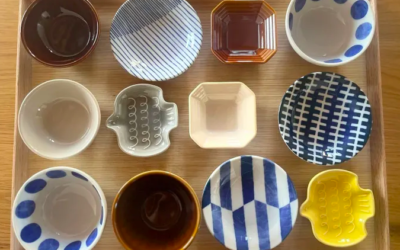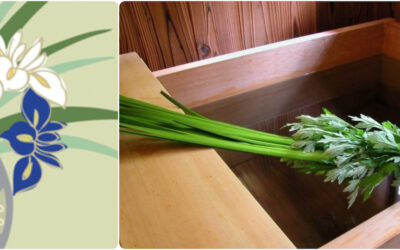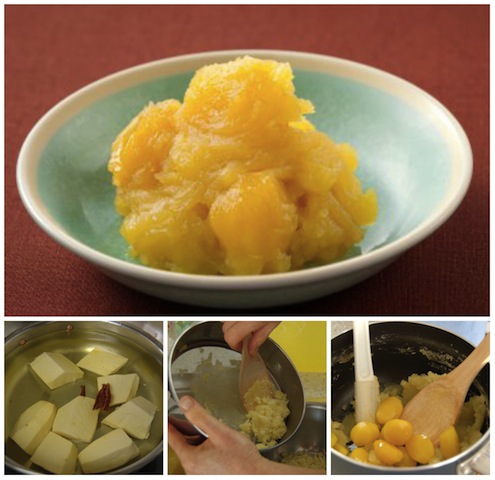
KURI KINTON
栗金団
This traditional New Year’s sweet combines syrup-stewed chestnuts with a sweet paste made of mashed and sieved satsuma imo potato. The golden color of both the chestnuts and the potatoes are enhanced by kuchinashi no mi (gardenia pods).
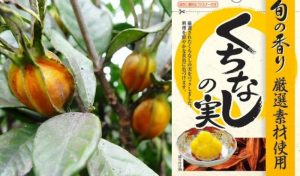
Kuchinashi no mi くちなしの実
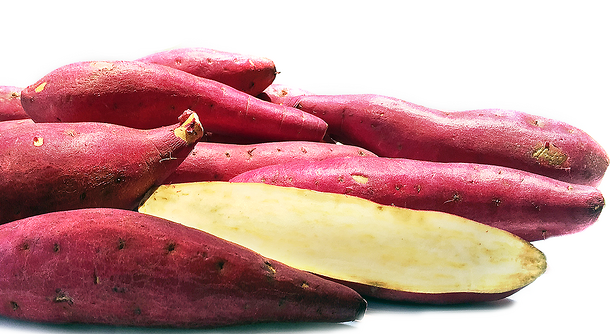
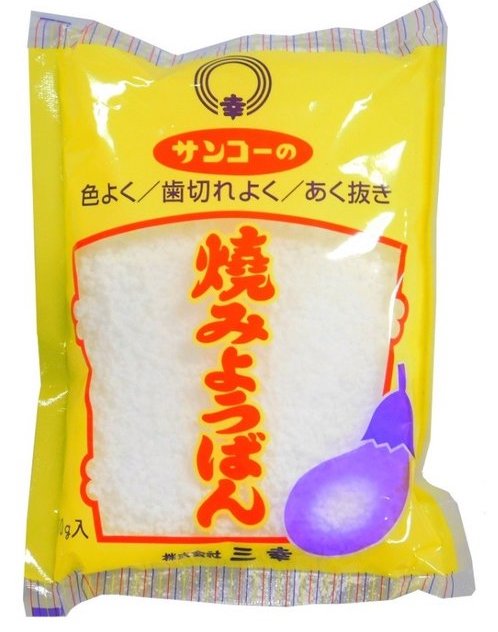
Satsuma Imo 薩摩芋
Satsuma imo (some call them “sweet potatoes,” others call them “yams”) were probably first introduced to Japan by Portuguese missionaries and traders who came to Kyushu in the early part of the seventeenth century. Satsuma (the former name for Kagoshima on the island of Kyushu) was one of several locations where the red-skinned, golden-fleshed tuber was cultivated, and thrived. A hardy crop that helped stave off famine when rice and other grains failed, Satsuma imo was, and still is, used in making confectionary.
To soak, or not to soak…?
There are several schools of thought regarding the value (color preservation, removal of unwanted bitterness or slimy texture), or detriment (loss of water soluble nutrients), of soaking vegetables. With Satsuma imo, I highly recommend you DO SOAK the potato chunks in (preferably) yaki myōban or a solution of baking soda and tap water. The red skins will bleed less, and the sticky-starchiness of the yellow flesh will be held at bay. Yaki myōban, a coarse alum powder, is most commonly used when pickling eggplants and so there is often a picture of an eggplant on the package. Most Asian grocery stores outside Japan will sell yaki myōban; in Japan look in well-stocked supermarkets.
To make myōban sui (the alum solution), add about 1/2 teaspoon powder for every 2 to 3 cups of tap water. Stir to dissolve and add the potato chunks. Let the sweet potato pieces sit in the solution for at least 10 minutes, and up to 2 hours. Drain, rinse in fresh cold water, and pat dry. Discard the rinsing water.
DOWNLOAD recipe for making KURI KINTON

